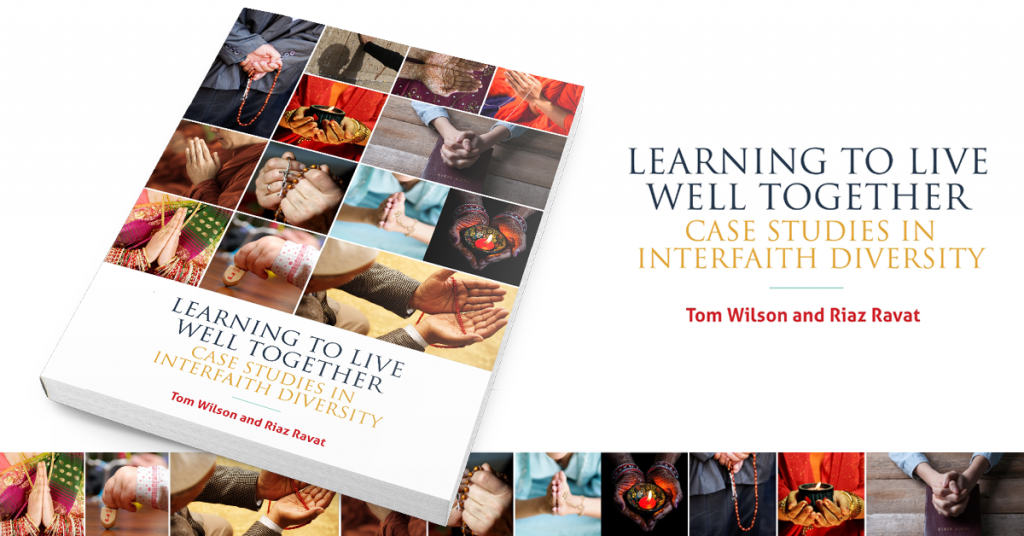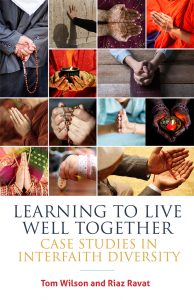We sought out Reverend Tom Wilson, co-author of Learning to Live Well Together, to find out any advice he had for frequently encountered issues with regards to interfaith meetings. In the second of two common scenarios, Tom discusses what must be considered when working out how to conduct vigils.
You never know when you will have to conduct a vigil; the nature of tragedy is that it takes us unawares. But this does not stop us planning. Many may know of the existence of plans for Operation London Bridge, the code name for the activities that will take place across the United Kingdom when the Queen dies, as she must do one day. Whilst it is inevitable that every individual dies, and so we must of necessity plan how to mark those deaths, the nature or fact of a terrorist attack is not as clear-cut. But given recent history, with four terrorist attacks in the United Kingdom in a few short months, it is nevertheless important that we have some ideas of what we might do should something terrible happen.
Broadly speaking, there are three contingencies to plan for. First, an attack close to, or in, the area in which you live. Second, an attack elsewhere in the United Kingdom. Third, an attack elsewhere in the world that somehow impacts the place where you live. The first would have the greatest impact on civic society, and would require the fastest response. At a time when people are panicked and unsure, it is vital to bring people together, to express concern, solidarity and a determination to work for peace. It is also vital to involve the media, both broadcast and print journalism, as well as social media. To be slightly crude, journalists will be looking for content, and the best we can do in these situations is to provide positive content, that speaks of hope, of rebuilding, of working for the good of all. Preparing and releasing statements the day after an incident is one simple way to ensure such positive content is available.
In any of the three scenarios outlined above, a contingency plan, including decisions trees detailing who will do what, in what order and with what authority can help tremendously. Lists of appropriate contacts, of places to meet and plan and of suitable venues for a vigil are all also necessary. Some people advocate having resources to hand; tea lights or other candles, chalk for people to write messages of solidarity, pre-selected texts from a number of religious traditions that speak of peace and working together, hi-visibility jackets for stewards, a public address system and so on.
Vigils are public expressions of grief, and so should be planned in collaboration rather than as solo efforts. Working out who the people are who need to be in the room to plan the most effective vigil is the type of groundwork that can be done at any time, and ought to be done by responsible civic society organizations in partnership with local councils.
The type of incident will have a significant impact on the response offered. If an attack is local, then everyone is immediately likely to want to work together. But international incidents are the more complex. Take the example of Israel/Palestine. Jews, Muslims and Christians will have very different understandings of what the significance of a particular incident is, and how it should be responded to. Similarly, Hindus and Sikhs may well differ in how they respond to something in the Punjab region of India. In these circumstances, it can be difficult to determine what an effective vigil might look like. Sometimes it is better to let an individual community determine their own response rather than try and force false unity.
We live in an age where the news-cycle moves quickly, and for a vigil to have a significant impact, it also needs to be organized quickly. But vigils are by no means the only part of working for peace. Once a quick response has been offered, then other follow up actions should also take place to ensure the good will gained at a vigil is built on to repair the damage caused by any attack.
Tom Wilson is co-author of Learning to Live Well Together alongside Riaz Ravat, their ground-breaking book draws on their work at the St Philip’s Centre in Leicester and presents a collection of case studies to show how people from a variety of religious backgrounds and ethical convictions have learnt to coexist peacefully. Without shying away from the conflicts and challenges that have occurred, the book focuses on the lessons learnt and offers real examples of how to promote positive interfaith relationships.
It is an excellent resource for anyone wishing to understand the issues of religion and belief that may arise at local and national levels, and develop appropriate attitudes and actions for peaceful resolution.
To find out more, and buy the book click here.
If you would like to read more blogs like this and get the latest news and offers on our interfaith and religion books, why not join our mailing list? We can send information by email or post as you prefer. You may also be interested in liking our Religion, Chaplaincy and Spiritual Care Facebook Page.

